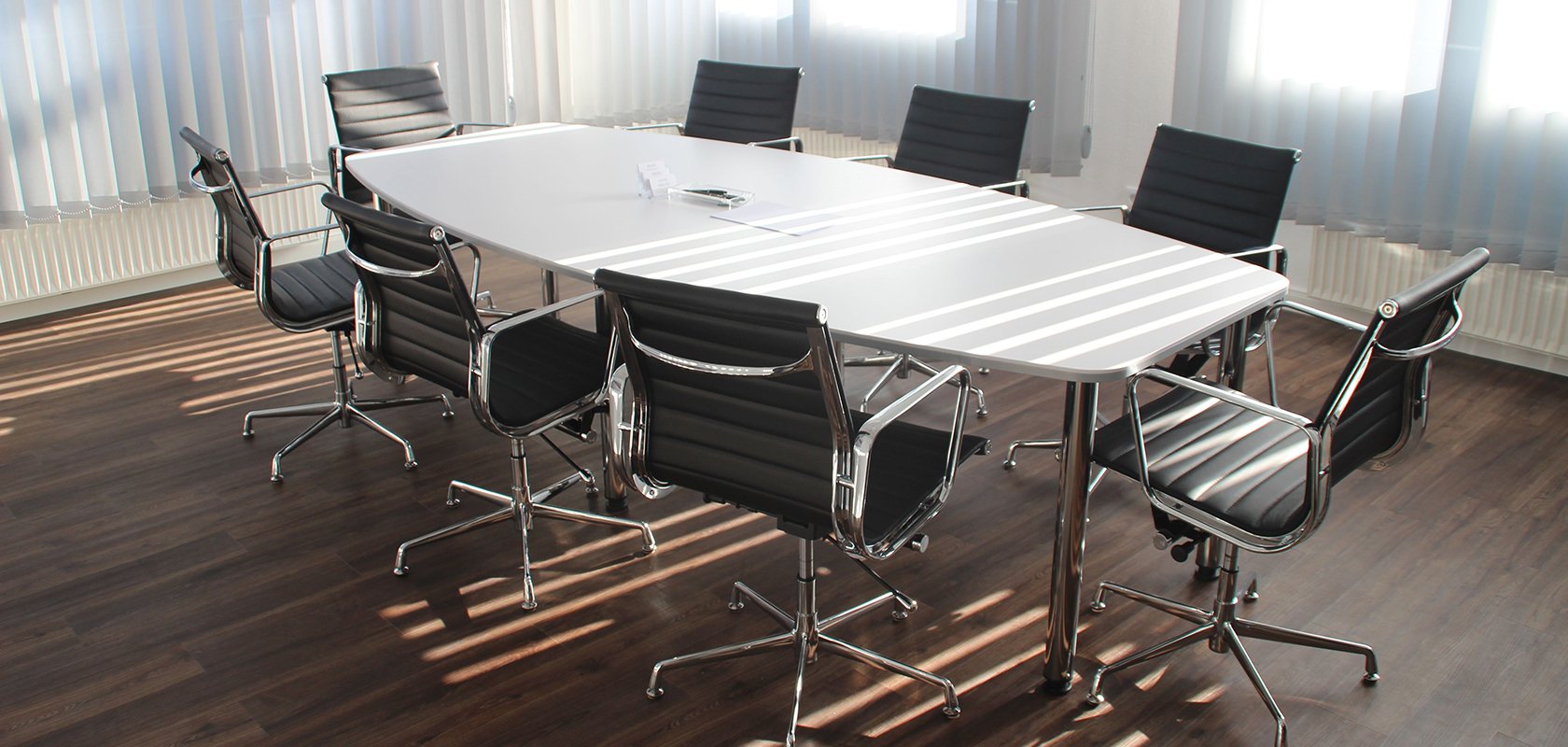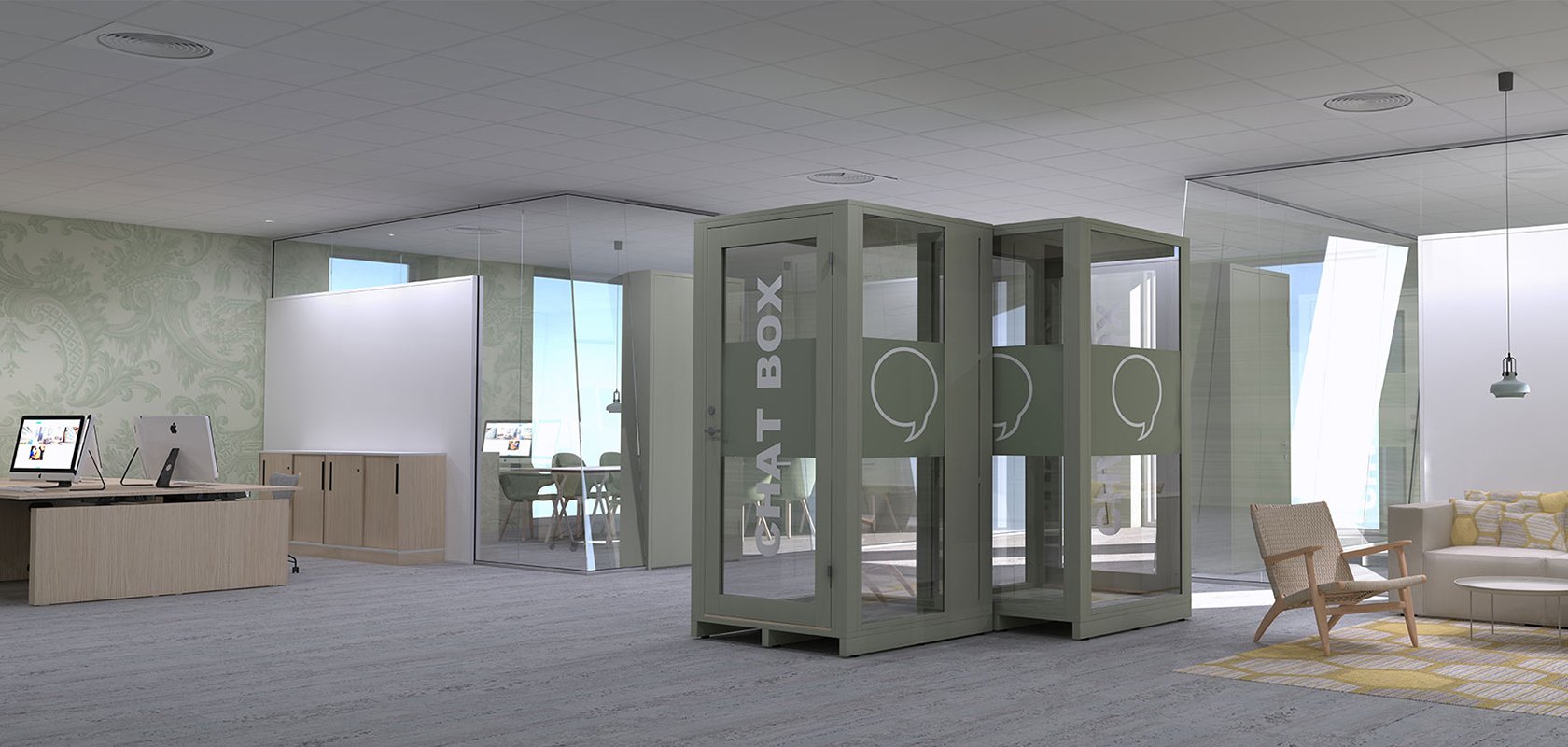
Just a decade or two ago, cell offices were the most common office layout where employees had their own rooms and a door they could shut. Today things are a little bit different. Even if cell offices still exist, the open floor plan spaces such as landscapes and activity based offices have become more common. In addition, companies have become much more meeting intensive, something that puts new requirements on office space planning in terms of design and how to get as much utilization of the spaces as possible. A big mistake many companies make is building too big conference rooms...

In general, companies have overdimensioned conference rooms. Quite often you see 1-2 people sit in a room suited for 8-10 people. As a matter of fact, 50-70% of all Swedish meetings consist of 1-4 people(!) One meeting attendee is undoubtedly the most common i.e. someone that books a meeting room for e.g. a phone or Skype meeting. At second place, two participants are the most common, thereafter three etc. In the extensive amount of user data we have access to, we can also see an increase in "one person meetings". What's it like at your workplace – are at least 50% of the meeting rooms adapted for 1-4 people...?
So why do we have these big conference rooms? It's probably a leftover from the past when meeting frequency wasn't this high and the meetings mostly involved executives and management – think "board room". The statistics speak for themselves though – it is more, smaller rooms that companies need e.g. huddle rooms and phone booths.

It's not just the office spaces we have to be better at utilizing smarter, but also employees' work hours. I mean, how many times haven't you been in a meeting wondering what you're doing there? A common problem we see is that too many people are invited to a meeting. It seems like we have an unhealthy preference for the cc field when sending meeting invitations, sort of a "the more the merrier" mindset. Our explanation to this is, among others, that we invite "just in case" because we don't want to step on someone's toes (especially us Swedes) and/or that we don't want anyone to feel left out. Good intentions? Definitely. But what happens with the efficiency?
Not only that our conference rooms are too big in relation to how often all seats are actually used, large meetings in themselves are rarely very productive. SpaceX and Tesla founder Elon Musk is known for challenging existing conceptions of how things should be done. According to Musk, it is efficiency and productivity that should lead the way. Recently he announced to his employees that they shouldn't participate in too large meetings:
"Excessive meetings are the blight of big companies and almost always get worse over time. Please get [rid] of all large meetings, unless you're certain they are providing value to the whole audience, in which case keep them very short."

It goes without saying that there are situations where you have to invite several people. Many accept meeting invitations on autopilot, without considering if it's really necessary to participate. Therefore you can use the options "required" and "optional" in your invitation (if you're using Outlook, click on "To" in front of the text field). By doing so, the recipient has to make an active decision.
Be smart about your office space planning and review your meeting culture. There are most certainly money and a lot of time to save!
Learn more about meeting rooms and space planning here.
*All numbers presented in the article are based on user data from hundreds of companies using our own statistics software
Meetio Stats.
These Stories on Workplace design
Meetio AB/Logitech Nordics AB
Hamngatan 4
211 22, Malmö
Sweden
Magnus Ladulåsgatan 3
SE-118 65 Stockholm
Sweden
Sweden: +46-(0)10-101 95 60
Comments (16)